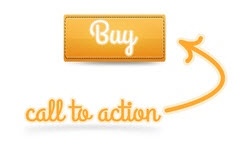 Essentially, every page on your website is considered a landing page – whether it’s the home page, a product page or a campaign page, which means that every page needs to have the power to command attention and encourage engagement. By following these smart landing page best practices, you can increase the likelihood that visitors will not only read your content, but that they’ll actually interact with it in the way that you intend.
Essentially, every page on your website is considered a landing page – whether it’s the home page, a product page or a campaign page, which means that every page needs to have the power to command attention and encourage engagement. By following these smart landing page best practices, you can increase the likelihood that visitors will not only read your content, but that they’ll actually interact with it in the way that you intend.
Use strong messaging. It’s essential to strike a balance with the right amount of text on a landing page. You don’t want to weigh down the page with wordy and redundant copy, yet being too minimal might not provide enough information to your user. Instead, use small bites of content, presented with headlines, subheads and bullets. And remember to keep important information, especially the call to action, above the fold. This should especially be taken into account during the layout stage of the page.
Be sure to define your value proposition. With so much competition in the online marketplace, site visitors need to understand what makes your product or service unique. Is it the cost? The quality? The technology? Whatever it is that gives you the competitive edge needs to come across on your website.
Establish credibility. Word of mouth marketing still proves to be the most effective, though instead of face-to-face, this now happens via social networks. By adding real customer reviews and ratings to your site, you can provide users with the information they are seeking without risking that they’ll leave your site. You can also build trust and establish cred by posting documents related to your industry, such as certifications and awards. Even integration with Google maps can help to instill a sense of trust with local customers.
When it comes time for your landing page to go live, a/b testing can help you refine your page for the best possible long-term outcome. Test headline and call-to-action copy to find out what resonates with your audience and what gets the most clicks, and also test layouts to see what’s preferred. Be sure to identify what your testing goals are before getting started, then hone in on how users are responding to tailor for intuitive and fully optimized landing pages.
